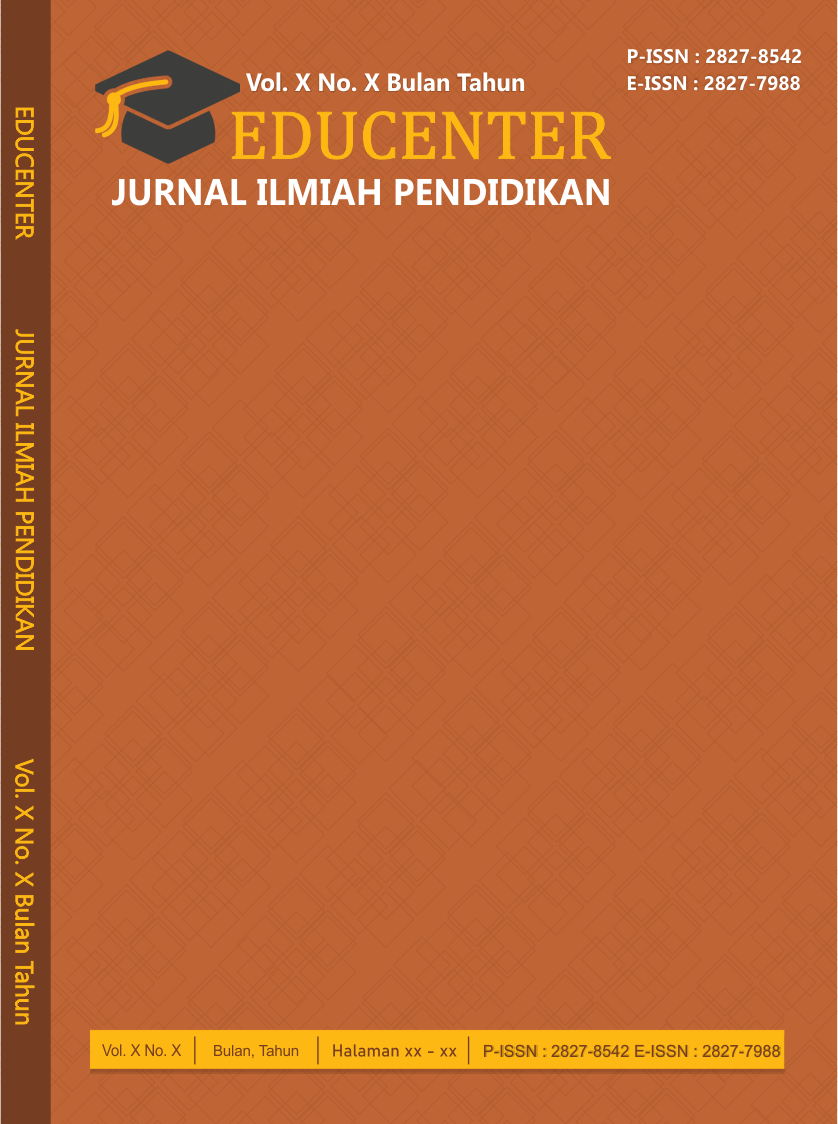Implementation of deep learning in the recommendation system for high school admissions in Semarang City
Main Article Content
Abstract
The New Student Admission System for senior high schools in Semarang still faces challenges in achieving fair and proportional selection. The dominant zoning policy often ignores students' academic potential; therefore, a more comprehensive recommendation system is needed. This study proposes the development of a deep learning-based school recommendation system using a Multi-Layer Perceptron (MLP) architecture with a backpropagation algorithm. The dataset consists of 16 public senior high schools in Semarang, with the main variables including exam scores, age, school capacity, and distance from student residence calculated using the Euclidean distance method. The data is divided into a training set and a test set, with normalization applied to all numeric features. The training results show high accuracy. The system is able to generate school recommendation rankings that are visualized in tabular formats and interactive maps. Experimental results indicate that distance and school capacity contribute significantly to determining preference scores. Therefore, this study confirms that the deep learning approach is more adaptive than the rule-based linear method and can be an alternative solution to support a fairer and more transparent Student Admissions policy. For further research, it is recommended to develop the system by adding more diverse variables, real-time data integration, and implementing a more complex deep learning architecture to optimize the quality of recommendations.
Article Details
Section

This work is licensed under a Creative Commons Attribution-NonCommercial 4.0 International License.
How to Cite
References
Ajol, T. A., Gran, S. S., Kanyan, A., & Lajim, S. F. (2020). An Enhanced Systematic Student Performance Evaluation Based on Fuzzy Logic Approach for Selection of Best Student Award. Asian Journal of University Education, 16(4), 10–20. https://eric.ed.gov/?id=EJ1288013
Alamuri, M., Surampudi, B., & Negi, A. (2024). Multi Dimensional Deep Encoding for Categorical Feature Space. Proceedings of the 2024 13th International Conference on Computing and Pattern Recognition, 120–128. https://doi.org/10.1145/3704323.3704378
Ali, P. J. M. (2022). Investigating the Impact of min-max data normalization on the regression performance of K-nearest neighbor with different similarity measurements. ARO-The Scientific Journal of Koya University, 10(1), 85–91. https://doi.org/10.14500/aro.10955
Bao, S., Wang, T., Zhou, L., Dai, G., Sun, G., & Shen, J. (2022). Two-Layer Matrix Factorization and Multi-Layer Perceptron for Online Service Recommendation. Applied Sciences, 12(15), 7369. https://doi.org/10.3390/app12157369
Behrens, T., Schmidt, K., Viscarra Rossel, R. A., Gries, P., Scholten, T., & MacMillan, R. A. (2018). Spatial modelling with Euclidean distance fields and machine learning. European Journal of Soil Science, 69(5), 757–770. https://doi.org/10.1111/ejss.12687
Cheong, H., Lyons, A., Houghton, R., & Majumdar, A. (2023). Secondary qualitative research methodology using online data within the context of social sciences. International Journal of Qualitative Methods, 22, 16094069231180160. https://doi.org/10.1177/16094069231180160
Erlina, M., & Okfalisa, O. (2023). The Study Program Selection System: Integrated Analytical Hierarchy Process (AHP) and Technique For Others Preference by Similarity to Ideal Solution (TOPSIS) Approach. IT Journal Research and Development, 8(1), 32–47. https://doi.org/10.25299/itjrd.2023.13562
Iswanto, M. E., Siregar, M. U., ’Uyun, S., & Nuruzzaman, M. T. (2021). Recommender systems for specializing new students in the K-13 curriculum using the profile matching, SAW, and a combination of both. Jurnal Teknologi Dan Sistem Komputer, 9(2), 96–105. https://doi.org/10.14710/jtsiskom.2021.13902
Jumiarti, E., & Suwarno, J. (2023). Penerapan Metode TOPSIS Untuk Merekomendasikan Pemilihan Jurusan Dalam Sistem Penerimaan Peserta Didik Baru (PPDB) Online Di SMK YAPPIKA Legok. Sainstech Jurnal Penelitian Dan Pengkajian Sains Dan Teknologi, 33(2), 66–71. https://doi.org/10.37277/stch.v33i2.1588
Kumar, U., & Banerji, H. (2025). Estimating weightage and prioritizing major domains of inclusive education assessment framework using analytical hierarchy process. International Journal of System Assurance Engineering and Management, 1–12. https://link.springer.com/article/10.1007/s13198-025-02869-3
Kurniawan, H., Swondo, A. P., Sari, E. P., Ummi, K., & Tanjung, M. R. (2020). Analysis and Comparative Between Profile Matching and SAW Method in Decision Support. 2020 8th International Conference on Cyber and IT Service Management (CITSM), 1–7. https://ieeexplore.ieee.org/abstract/document/9268857/
Liu, L., Zhang, W., & Han, C. (2021). A survey for the application of blockchain technology in the media. Peer-to-Peer Networking and Applications, 14(5), 3143–3165. https://link.springer.com/article/10.1007/s12083-021-01168-5
Papadogiannis, I., Wallace, M., & Karountzou, G. (2024). Educational data mining: A foundational overview. Encyclopedia, 4(4), 1644–1664. https://doi.org/10.3390/encyclopedia4040108
Sattin-Bajaj, C., & Jennings, J. L. (2020). School counselors’ assessment of the legitimacy of high school choice policy. Educational Policy, 34(1), 21–42. https://doi.org/10.1177/0895904819881774
Sharifnia, A. M., Kpormegbey, D. E., Thapa, D. K., & Cleary, M. (2025). A Primer of Data Cleaning in Quantitative Research: Handling Missing Values and Outliers. Journal of Advanced Nursing. https://doi.org/10.1111/jan.16908
Soukhov, A., Higgins, C. D., Paez, A., & Mohamed, M. (2025). Ten Years of School Closures and Consolidations in Hamilton, Canada and the Impact on Multimodal Accessibility. Networks and Spatial Economics, 1–30. https://link.springer.com/article/10.1007/s11067-025-09677-z
Tiwari, D., & Roy, U. K. (2025). Preferences for student rental housing in Dehradun, India: Using TOPSIS technique. Proceedings of the International Conference of Contemporary Affairs in Architecture and Urbanism-ICCAUA, 8(1), 1719–1731. http://journal.iccaua.com/jiccaua/article/view/725
Vrigazova, B. (2021). The proportion for splitting data into training and test set for the bootstrap in classification problems. Business Systems Research: International Journal of the Society for Advancing Innovation and Research in Economy, 12(1), 228–242. https://ojs.srce.hr/index.php/bsr/article/view/17347
Wątróbski, J., Bączkiewicz, A., Król, R., & Rudawska, I. (2024). A Neural Network Regression Model Supported by Multi-Criteria Methods for Ranking Prediction in Sustainable Development Assessment. In Advances in Information Systems Development: Information Systems Development, Organizational Aspects, and Societal Trends (pp. 1–21). Springer. https://link.springer.com/chapter/10.1007/978-3-031-57189-3_1
Wong, J. S., Lee, C., & Beck, N. (2024). The effects of aftercare/resettlement services on crime and violence in children and youth: A systematic review. Campbell Systematic Reviews, 20(2), e1404. https://doi.org/10.1002/cl2.1404
Wongvilaisakul, W., Netinant, P., & Rukhiran, M. (2023). Dynamic multi-criteria decision making of graduate admission recommender system: AHP and fuzzy AHP approaches. Sustainability, 15(12), 9758. https://doi.org/10.3390/su15129758
Xhafaj, E., Qendraj, D. H., Xhafaj, A., & Gjikaj, N. (2022). A hybrid integration of PLS-SEM, AHP, and FAHP methods to evaluate the factors that influence the use of an LMS. International Journal of Decision Support System Technology (IJDSST), 14(1), 1–17. https://www.igi-global.com/article/a-hybrid-integration-of-pls-sem-ahp-and-fahp-methods-to-evaluate-the-factors-that-influence-the-use-of-an-lms/286697

